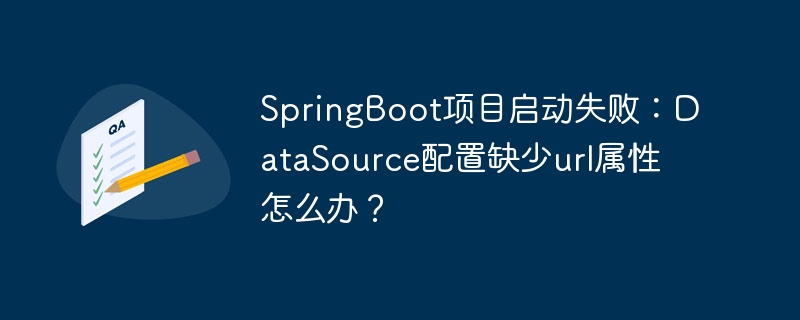php发送http请求的方法有四种:file_get_contents、fsockopen、cURL和guzzle http client。1. file_get_contents适用于简单get请求,但功能有限;2. fsockopen提供底层控制,需手动处理请求细节;3. curl功能强大,支持多种协议和高级选项,适合复杂需求;4. guzzle提供简洁api,具备良好可维护性和可测试性,适合现代开发。选择时应考虑请求复杂度、性能、安全性及代码维护性。例如,发送https请求需确保ssl/tls支持,并优先使用curl或guzzle;若需高并发,curl或基于其的guzzle更佳;对于可读性强的代码,推荐使用guzzle。此外,这几种方法均支持获取响应头和设置超时时间,以提升程序健壮性。

PHP发送HTTP请求,核心在于利用PHP提供的函数或库,模拟浏览器行为,向服务器发送请求并接收响应。常用的方法包括file_get_contents、fsockopen、cURL以及Guzzle HTTP Client。选择哪种方式取决于你的具体需求,例如是否需要处理复杂的请求头、是否需要支持HTTPS,以及是否需要更高的性能和灵活性。

file_get_contents通常最简单,但功能也最有限。fsockopen提供了更底层的控制,但需要手动处理更多细节。cURL是一个功能强大的库,支持各种协议和选项,是更专业的选择。而Guzzle HTTP Client则是一个现代的PHP HTTP客户端,提供了更简洁的API和更好的可测试性。

如何选择合适的HTTP请求方法?
选择HTTP请求方法,需要考虑以下几个因素:
立即学习“PHP免费学习笔记(深入)”;

-
复杂度需求:如果只是简单的GET请求,file_get_contents可能就足够了。但如果需要发送POST请求,或者需要自定义请求头、处理Cookies等,cURL或Guzzle会更合适。
-
性能要求:在高并发场景下,cURL通常比file_get_contents性能更好,因为它使用了更底层的网络协议。Guzzle底层也可以使用cURL,所以性能也相对较好。
-
安全性:如果需要发送HTTPS请求,确保服务器支持SSL/TLS,并且PHP配置正确。cURL和Guzzle都支持HTTPS,并且可以配置SSL证书验证。
-
代码可维护性:Guzzle提供了更简洁、易于理解的API,可以提高代码的可读性和可维护性。
下面分别介绍这四种方法,并给出示例代码。
file_get_contents发送HTTP请求
file_get_contents函数可以读取一个文件或者URL的内容。当URL是一个HTTP地址时,它会发送一个HTTP请求并返回响应内容。
<?php $url = 'https://www.example.com'; $content = file_get_contents($url); if ($content !== false) { echo $content; } else { echo "Failed to retrieve content."; } ?>
这个方法很简单,但是不支持自定义请求头、POST请求等高级功能。如果需要发送POST请求,可以使用stream_context_create函数来创建上下文选项。
<?php $url = 'https://www.example.com/api'; $data = array('key1' => 'value1', 'key2' => 'value2'); $options = array( 'http' => array( 'method' => 'POST', 'header' => 'Content-type: application/x-www-form-urlencoded', 'content' => http_build_query($data) ) ); $context = stream_context_create($options); $result = file_get_contents($url, false, $context); if ($result !== false) { echo $result; } else { echo "Failed to retrieve content."; } ?>
fsockopen发送HTTP请求
fsockopen函数可以打开一个套接字连接,通过套接字可以手动发送HTTP请求并接收响应。
<?php $host = 'www.example.com'; $port = 80; $path = '/'; $fp = fsockopen($host, $port, $errno, $errstr, 30); if (!$fp) { echo "$errstr ($errno)<br />n"; } else { $out = "GET $path HTTP/1.1rn"; $out .= "Host: $hostrn"; $out .= "Connection: Closernrn"; fwrite($fp, $out); while (!feof($fp)) { echo fgets($fp, 128); } fclose($fp); } ?>
这个方法提供了更底层的控制,但是需要手动构建HTTP请求头和处理响应。
cURL发送HTTP请求
cURL是一个功能强大的库,支持各种协议和选项,是发送HTTP请求的常用方法。
<?php $url = 'https://www.example.com'; $ch = curl_init(); curl_setopt($ch, CURLOPT_URL, $url); curl_setopt($ch, CURLOPT_RETURNTRANSFER, 1); curl_setopt($ch, CURLOPT_SSL_VERIFYPEER, false); // 忽略SSL证书验证 $output = curl_exec($ch); if (curl_errno($ch)) { echo 'Error:' . curl_error($ch); } curl_close($ch); echo $output; ?>
cURL支持各种选项,例如自定义请求头、发送POST请求、设置超时时间等。
<?php $url = 'https://www.example.com/api'; $data = array('key1' => 'value1', 'key2' => 'value2'); $ch = curl_init(); curl_setopt($ch, CURLOPT_URL, $url); curl_setopt($ch, CURLOPT_RETURNTRANSFER, 1); curl_setopt($ch, CURLOPT_POST, 1); curl_setopt($ch, CURLOPT_POSTFIELDS, $data); curl_setopt($ch, CURLOPT_SSL_VERIFYPEER, false); // 忽略SSL证书验证 $output = curl_exec($ch); if (curl_errno($ch)) { echo 'Error:' . curl_error($ch); } curl_close($ch); echo $output; ?>
Guzzle HTTP Client发送HTTP请求
Guzzle是一个现代的PHP HTTP客户端,提供了更简洁的API和更好的可测试性。需要先通过composer安装Guzzle:
composer require guzzlehttp/guzzle
然后可以使用Guzzle发送HTTP请求:
<?php require 'vendor/autoload.php'; use GuzzleHttpClient; $client = new Client(); $response = $client->request('GET', 'https://www.example.com'); echo $response->getBody(); ?>
Guzzle也支持各种选项,例如自定义请求头、发送POST请求、设置超时时间等。
<?php require 'vendor/autoload.php'; use GuzzleHttpClient; $client = new Client(); $response = $client->request('POST', 'https://www.example.com/api', [ 'form_params' => [ 'key1' => 'value1', 'key2' => 'value2' ] ]); echo $response->getBody(); ?>
如何处理HTTP响应头?
在使用cURL或Guzzle发送HTTP请求时,可以很方便地获取HTTP响应头。
使用cURL:
<?php $url = 'https://www.example.com'; $ch = curl_init(); curl_setopt($ch, CURLOPT_URL, $url); curl_setopt($ch, CURLOPT_RETURNTRANSFER, 1); curl_setopt($ch, CURLOPT_HEADER, 1); // 返回header信息 curl_setopt($ch, CURLOPT_SSL_VERIFYPEER, false); $output = curl_exec($ch); $header_size = curl_getinfo($ch, CURLINFO_HEADER_SIZE); $header = substr($output, 0, $header_size); $body = substr($output, $header_size); curl_close($ch); echo "Header:n" . $header . "nn"; echo "Body:n" . $body; ?>
使用Guzzle:
<?php require 'vendor/autoload.php'; use GuzzleHttpClient; $client = new Client(); $response = $client->request('GET', 'https://www.example.com'); $headers = $response->getHeaders(); $body = $response->getBody(); echo "Headers:n"; foreach ($headers as $name => $values) { echo $name . ': ' . implode(', ', $values) . "n"; } echo "nBody:n" . $body; ?>
如何处理HTTP请求超时?
在发送HTTP请求时,设置合理的超时时间非常重要,可以避免程序长时间阻塞。
使用cURL:
<?php $url = 'https://www.example.com'; $ch = curl_init(); curl_setopt($ch, CURLOPT_URL, $url); curl_setopt($ch, CURLOPT_RETURNTRANSFER, 1); curl_setopt($ch, CURLOPT_TIMEOUT, 10); // 设置超时时间为10秒 curl_setopt($ch, CURLOPT_SSL_VERIFYPEER, false); $output = curl_exec($ch); if (curl_errno($ch)) { echo 'Error:' . curl_error($ch); } curl_close($ch); echo $output; ?>
使用Guzzle:
<?php require 'vendor/autoload.php'; use GuzzleHttpClient; $client = new Client(); try { $response = $client->request('GET', 'https://www.example.com', ['timeout' => 10]); // 设置超时时间为10秒 echo $response->getBody(); } catch (GuzzleHttpExceptionRequestException $e) { echo 'Error: ' . $e->getMessage(); } ?>

















